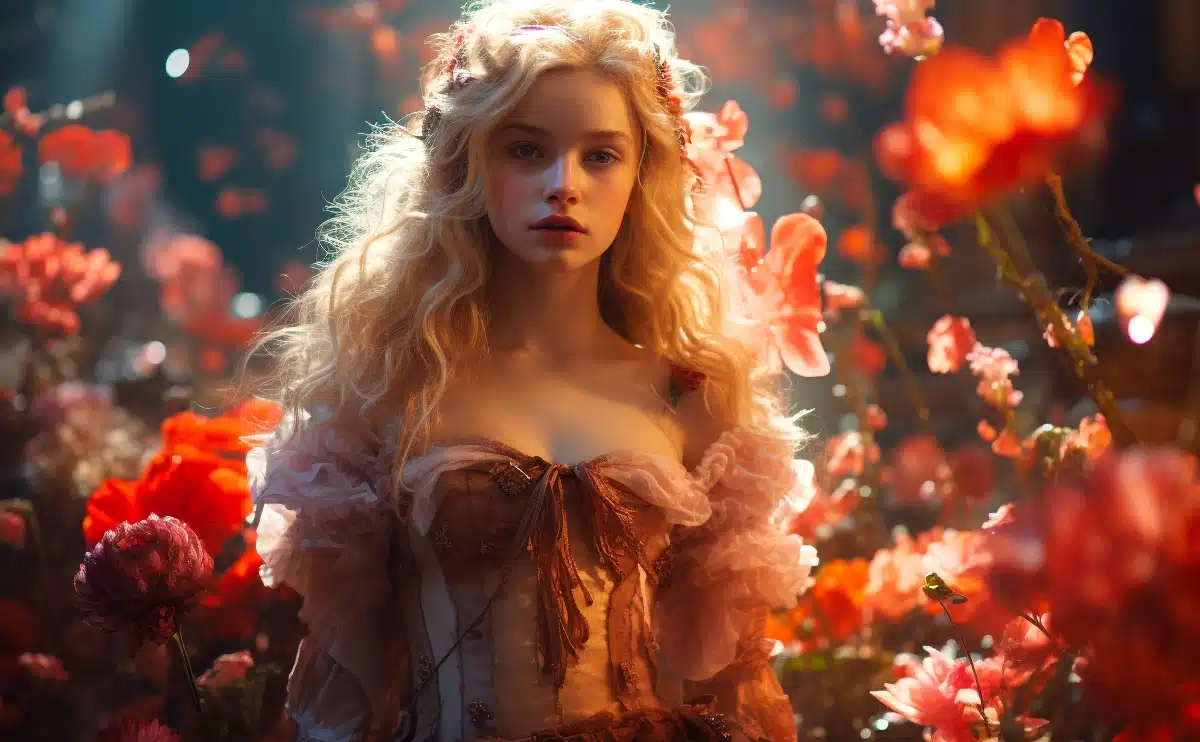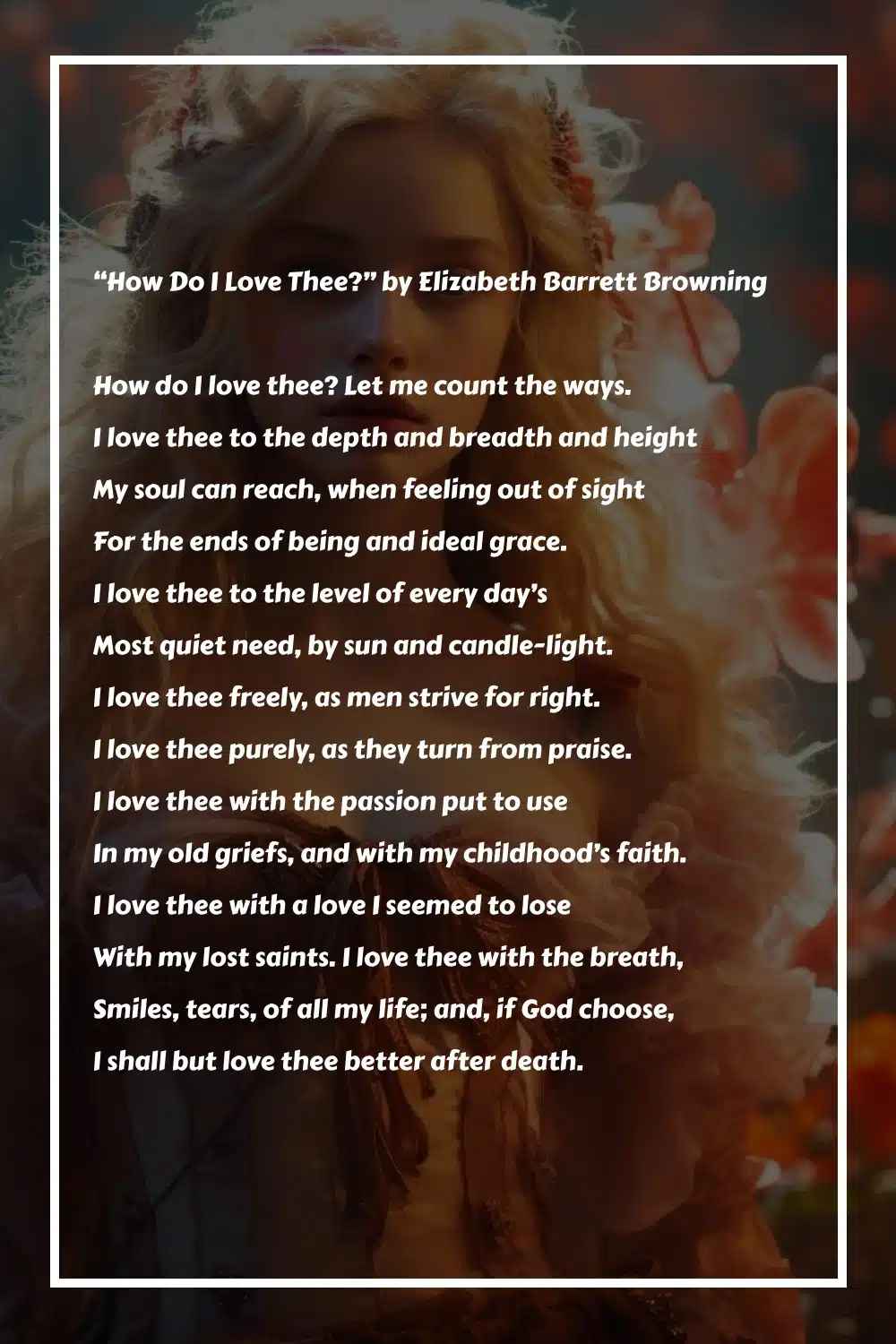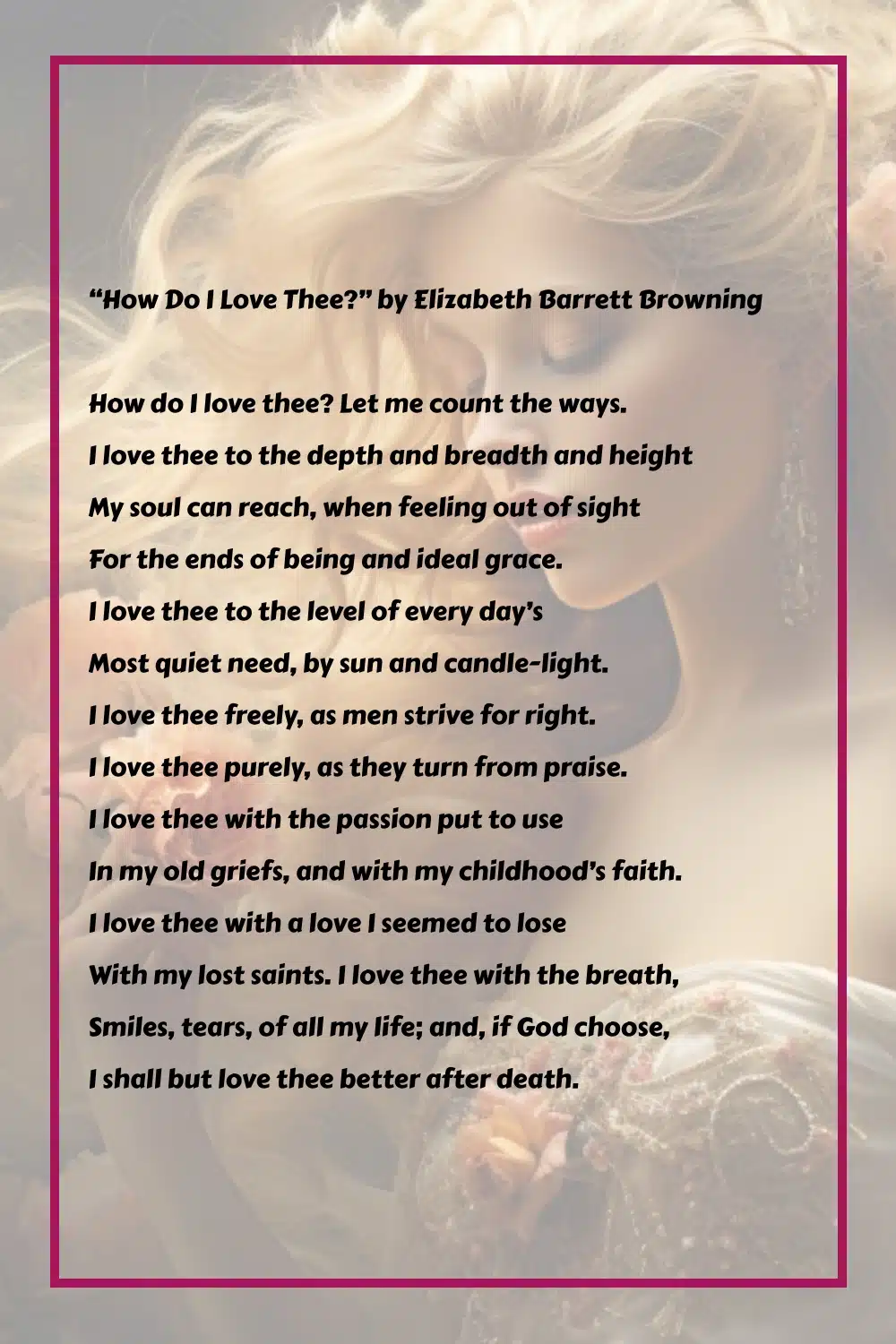Here’s the profoundly passionate love poem “How Do I Love Thee?” by Elizabeth Barrett Browning:
“How do I love thee?,” originally referred to in publication as “Sonnet 43,” is one of the most famous sonnets ever written, competing even with Shakespeare’s various sonnets for attention.
Browning wrote the poem during the Victorian era and the Romantic movement.
Notably, the poem is not a traditional English sonnet but is actually an Italian/Petrarchan sonnet.
This gives it a different structure and a different feel than many of the sonnets we’re familiar with in English, since the Petrarchan form is much less common to us in English.
So if you want to delve into heartfelt love, then this is for you.
Let’s go!

The Poem – “How Do I Love Thee?” by Elizabeth Barrett Browning

“How Do I Love Thee?” by Elizabeth Barrett Browning
How do I love thee? Let me count the ways.
I love thee to the depth and breadth and height
My soul can reach, when feeling out of sight
For the ends of being and ideal grace.
I love thee to the level of every day’s
Most quiet need, by sun and candle-light.
I love thee freely, as men strive for right.
I love thee purely, as they turn from praise.
I love thee with the passion put to use
In my old griefs, and with my childhood’s faith.
I love thee with a love I seemed to lose
With my lost saints. I love thee with the breath,
Smiles, tears, of all my life; and, if God choose,
I shall but love thee better after death.
The Enduring Allure of “How Do I Love Thee?”: A Love Poem’s Mastery

The poem opens with one of the most iconic and memorable lines in literature, a poem so well-known and repeated that it’s hard to imagine the impact it might have had when it was still fresh.
The idea of “counting the ways” you love someone is a poignant one, with a lot of potential as a concept.
What follows does not disappoint, striving to list as many “different ways” as she can in one sonnet.
It’s noteworthy that Browning avoids using gendered pronouns in the poem.
This was almost certainly a conscious decision and allows for anyone reading the poem to relate to it on their own terms.
The repeating “I love thee” at the beginning of several lines does a good job of hammering in the point that this is meant to be a strong confession of love, though some readers may choose to criticize the repetition.
Each line starting with “I love thee” seems to list off another way that the speaker’s love functions, creating a nuanced and well-rounded depiction of love as the poem progresses.
One interesting element of this particular sonnet is that it doesn’t restrain itself to the twist you might normally expect from a sonnet.
In a Petrarchan sonnet, we would normally expect the perspective or mindset of the speaker to go through some sort of dramatic shift from the first octave to the final sestet.
Instead, Browning uses an enjambed line at the end of the octave (a sentence that continues across multiple lines) and even continues the list format from the octave with one more repetition of “I love thee” at the beginning of a line.
I would argue that this commitment to focus only strengthens the poem.
While dancing across several ways to express its goal, it remains dedicated to that singular goal of declaring and describing the speaker’s love.
The poem generates an intertwined sense of romantic love and religious love.
The speaker declares that their love extends to the fullest dimensions their “soul can reach” and words like “grace,” “faith,” and “praise” are used repeatedly throughout.
This tension between romantic and spiritual love comes to a head in the last line, in which they declare they’ll “but love thee better after death.”
The speaker makes it a point to say “if God choose” immediately before this line, another nod to the intertwined nature of their faith and their love.
While Romanticism was not exclusively relegated to love poems, you will find that most famous English love poems do come from this era.
It was a movement that glorified human emotion and expression, so it shouldn’t be surprising that many, many love poems were written in this era.
Yet among the hundreds or even thousands of Romantic era love poems that survive today, even then Browning’s sonnet stands out as powerful and original.
Its bold proclamations of love still ring out as loudly as ever, even in the present day.
Poet’s Note

While the poem itself is well-remembered, it has had a sort of ripple effect on poems as a whole.
Any poem written as a list of ways to express love inherently has to compete with “Sonnet 43” and can come off as cliché if it’s not up to the task.
Whether you take this as a challenge or as a sign to stay away from an approach that’s already been mastered is up to you.
